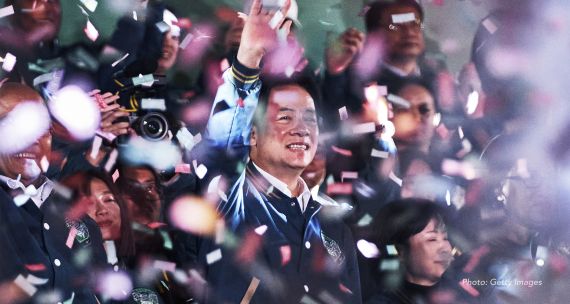Donald Trump was not the only political figure who made a speech on January 20. A few hours earlier, Japanese Prime Minister Abe Shinzo did so as well. The PM’s annual Government Policy Speech is a cross between the U.S. State of the Union and the speech from the throne of British parliamentary practice. It’s a chance for the government to brag about its past achievements and promise more to come. This year’s exercise is prominent for two reasons. After four years of ‘Abenomics,’ there is much to consider in terms of achievements and failures. Conversely, there is much less that is certain for Japan in the unpredictable world that is being banged together by the new U.S. administration.
There is Canadian interest in how the Japanese government will move forward at this new juncture: both Canada and Japan are heavily dependent on the U.S. economy, Japan is our third trading partner, and we both had high hopes for the Trans-Pacific Partnership (TPP). Out of this mix, there is, between our two countries, opportunity to be had or, at a minimum, damage to minimize.
With the Japanese now hedging their bets against a faltering TPP by preparing a bilateral trade package to propose to the Americans when President Trump and Prime Minister Abe meet later this month, an assessment of the shifting landscape under the Japan-U.S.-Canada triumvirate is in order.
But first comes Japan’s domestic policy. Abenomics has enjoyed some positive outcomes: 9% overall nominal growth in GDP over the four year of Abe’s administration; bankruptcies of small and medium enterprises are down 30%, to a 25-year low. The ratio of job offers to job seekers is up throughout the country, which is good news overall; unemployment is at 3.1%. Abe flagged these statistics, but unmentioned was the fact that under Abe, GDP growth has hovered between negatives and an average of less than half a percent. Deflation and its history of negative expectations, undoubtedly the most pernicious and persistent of Japan’s current economic weaknesses, is a 25-year story, give or take brief upturns, and has not been reversed by the Bank of Japan’s interest rate or quantitative easing initiatives. Nor have government deficits worked to improve things: the government has added to the national debt every year since 1992. Of this, economic stimulus packages have added 100 trillion yen to the national debt – over C$1 trillion dollars, with no take-off effect.
The good news, and there is good news, is the attention the Japanese government is finally giving to the restructuring agenda, the third of Abe’s self-styled policy ‘arrows.’ Broad reform principles, a staple of Abe’s past speeches, are replaced by sets of specific, practical and promised-to-be-legislated measures to address, head-on, weaknesses in areas such as the labour market, the education system, the pension system and, most contentiously, agricultural policy, whose existing rules have delayed the modernization and globalization of this small but politically significant sector. Proposed legislative changes range broadly and include: lowering tax burdens on the working poor and small and medium enterprises, increased funding for vocational training, extending the retirement age for private sector employees without reducing their salary levels, and equal pay for equal work. Leaving farmers free to choose their sources of agricultural inputs and freeing sales channels from the clutches of Japan Agriculture, the all-devouring industry control mechanism, would bring the ‘new era’ in agricultural policies that Abe says he wishes.
If the Abe government achieves half of what is promised, they could lay claim to a reform legacy. But even at their most extensive, these structural changes will take time to achieve any significant macro-economic impact. This realization is no doubt behind Abe’s active diplomacy to keep the TPP alive. According to Japanese estimates, a fully implemented TPP would contribute 2.4% to Japanese growth rates, far surpassing even the most ambitious reform agenda.
Abe is also committed to furthering negotiations for the Asia-based Regional Comprehensive Economic Partnership, which includes China and India. Abe addressed all three agreements in his policy statement, as well as the Japan/EU Economic Partnership Agreement, in negotiation since 2011. They are essential to Japan’s growth and reform objectives.
The Canadian hook here is the Trans-Pacific Partnership. Despite the Trump victory, Japan has ratified the agreement and had been pursuing efforts to convince the U.S. to reconsider its withdrawal, however quixotic that may have appeared. The penny has dropped in Tokyo, as it has from the start in Ottawa, that Trump is interested in bilateral transactions, and so the Japanese are now preparing a bilateral trade package for the Americans in advance of the upcoming meeting between Trump and Abe in the middle of the month.
But Japan believes that the TPP, as a negotiated package among the trans-Pacific grouping, is only dead if its signatories let it die. Chile has called a meeting of TPP committed countries to consider possible next steps, and it has invited China and South Korea, non-TPP countries, to attend.
Canada has taken the position, so far at least, that pursuing some alternative TPP is not an option, given the fact that the U.S. economy is larger than that of all of the other TPP countries combined, and thus crucial to the pact. But this is a mistake. Canada and Japan — and the other TPP signatories— must determine if the strategic and substantive advantages of the tentative deal can be salvaged. The Japanese need it for their domestic and strategic interests, and so do we. The alternative is not in anyone’s interest.
Canada’s trade future with the United States will be developed against the backdrop of NAFTA and continentalism. We don’t have a similar established framework in place for Asia. Thus, all options should remain under consideration by Prime Minister Trudeau’s government, in order to maintain our Asia Pacific trade and economic momentum. We are not at the RCEP table. Canada/China, Canada/Japan and Canada/India bilateral negotiations may, in time, produce results. But none of these will have the scope of a regional agreement, even one without the United States. At the moment, and to quote a phrase, we have no alternative.
Japan and Canada will have to work their respective deals with the United States. But the Asia Pacific will remain the world’s most significant growth area for the foreseeable future. The TPP bridge has been damaged, but it’s architecture and ambitions – expanded regional trade, progressive standards harmonization, and greater investment – remain essential to our future. Geopolitical headwinds will not provide an alternative, any time soon. The United States has made a significant strategic error in withdrawing from the TPP. Canada, Japan and the other TPP partners must reshape the partnership so that the benefits of the liberal international order can continue to move forward.
This piece first appeared in iPolitics on February 8, 2017.




